Seeking sharks in the depths of Fiordland
Despite a few delays last year, in May 2023 some of our team travelled to Te Moana o Atawhenua, Fiordland and joined our partners on the MV Pembroke to begin exploring sevengill shark study sites and deploying our baited underwater video camera.
As always the journey into the Fiords was an adventure of its own. In May the hills were dusted with snow making for a dramatic and beautiful helicopter flight from Te Anau, the gateway to the Fiords, to Broughton Arm the home mooring of the MV Pembroke.
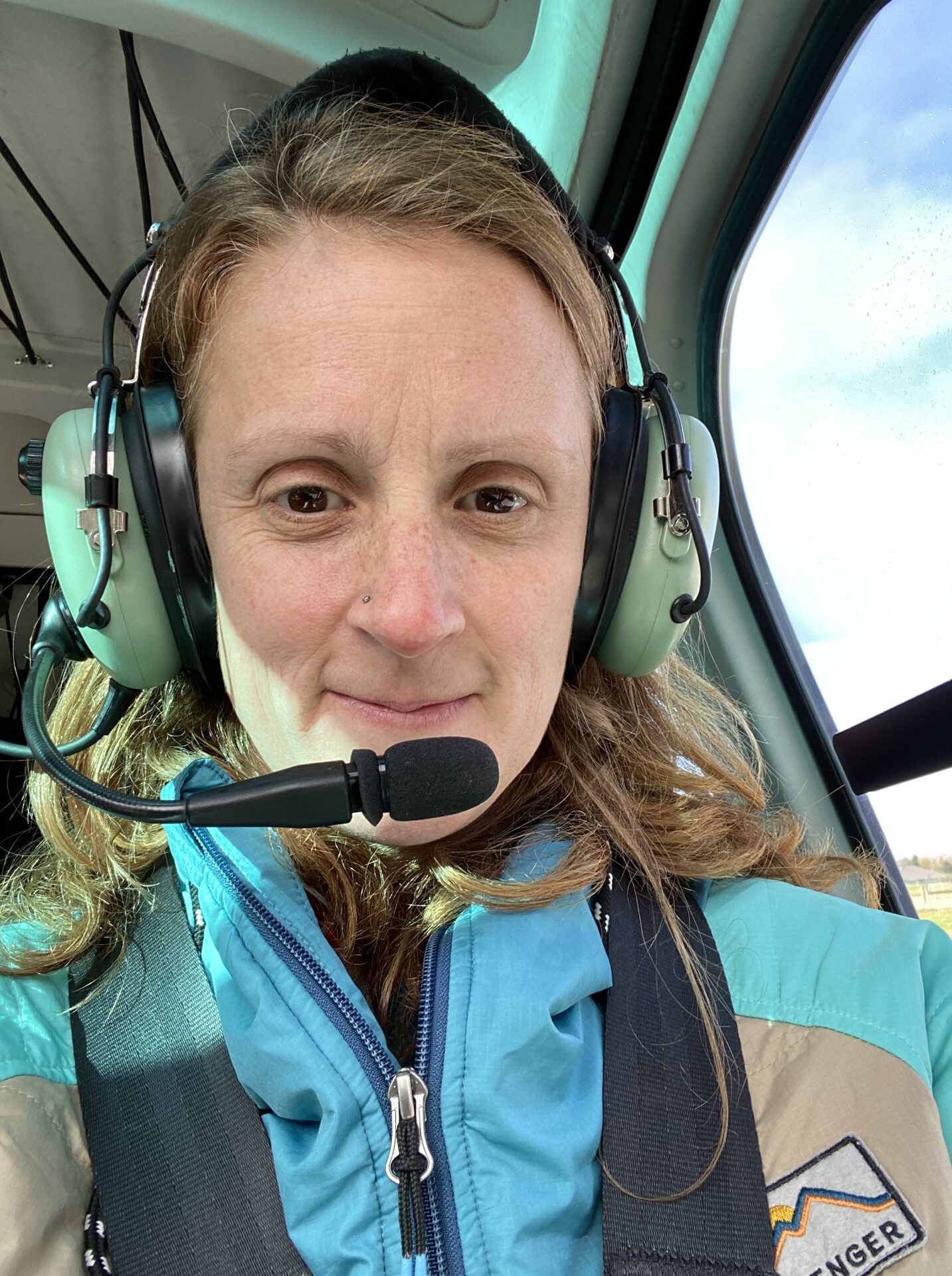
Preparing for our helicopter trip into Breaksea Sound. Picture by Alice Rogers | © copyright
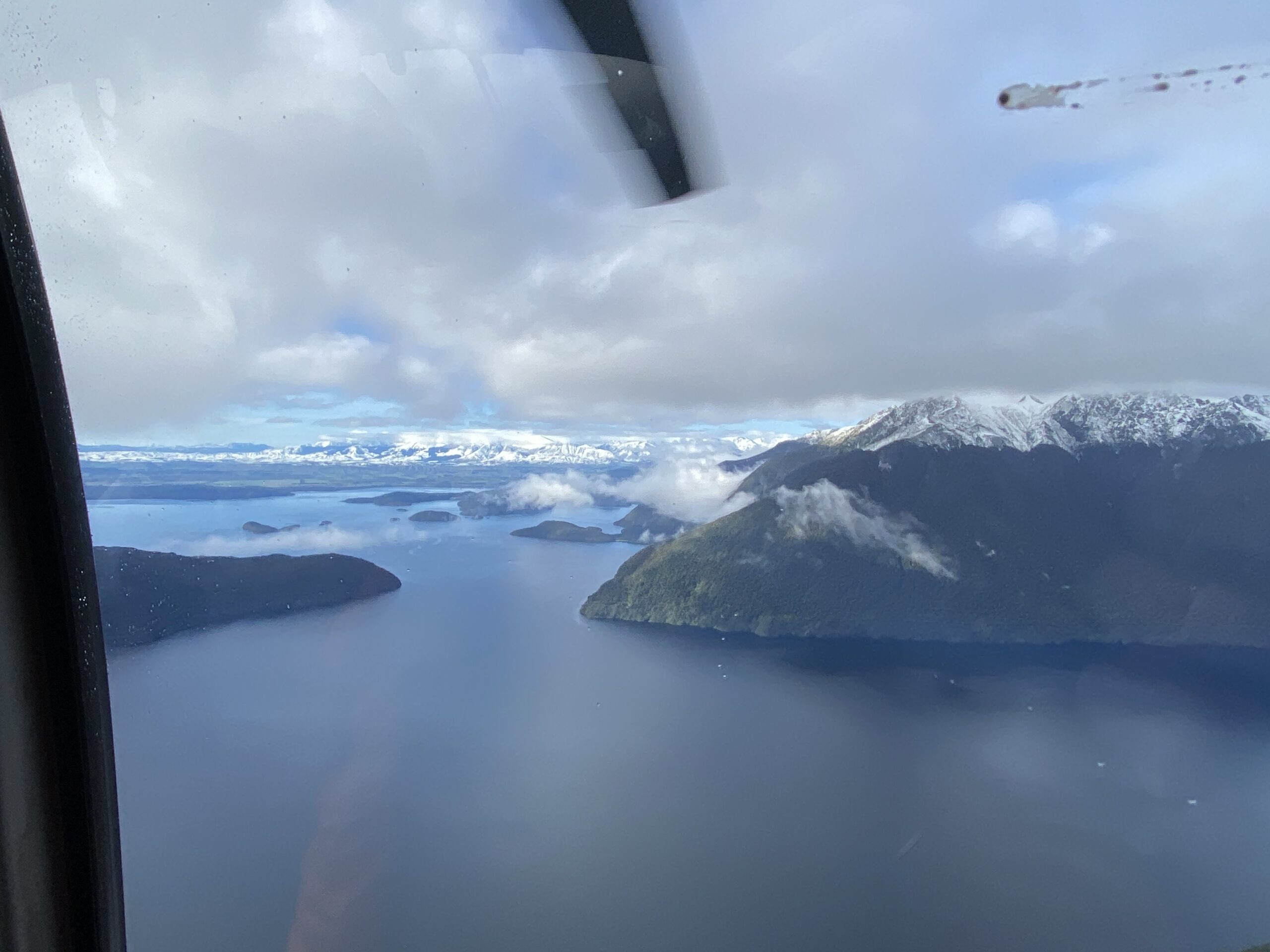
Snow on the hills approaching the Fiords Picture by Alice Rogers |© copyright
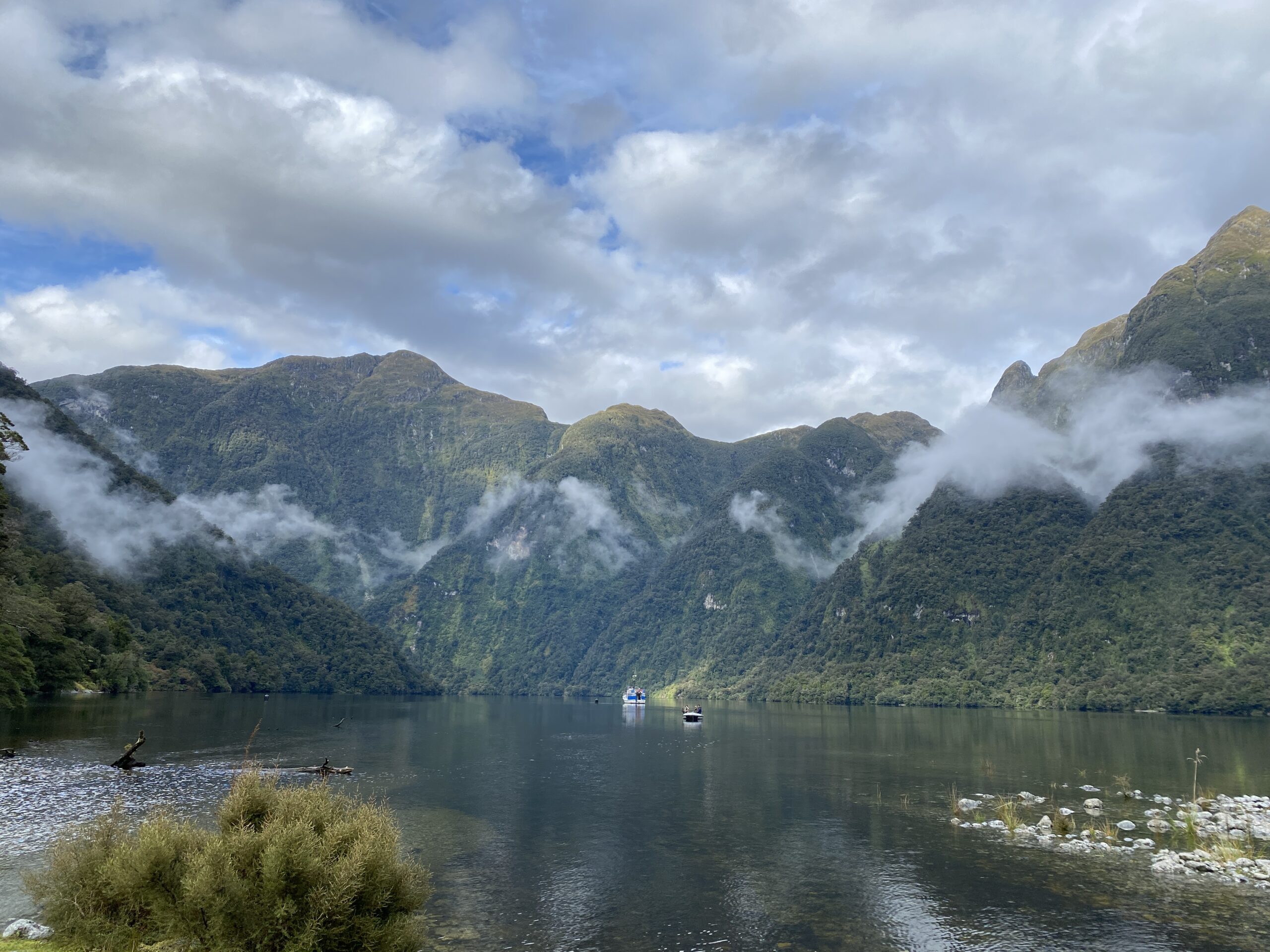
Approaching the MV Pembroke by helicpter in Broughton Arm, Te Puaitahi, Breaksea Sound. Photo by Alice Rogers | © copyright
After happy greetings and excited talks of plans for the week (over Katherine’s amazing warm muffins, naturally), we set to work. As always in Fiordland we had a range of plans and different projects to work on. In addition to Save Our Seas research, we were working on our broader Southern Fiordland Initiative (SFI) projects together with our friend and collaborator, Professor James Bell. These included studying the iconic Fiordland black coral, Antipathella fiordensis, and monitoring environmental conditions and deep-water communities at three long-term SFI monitoring sites.
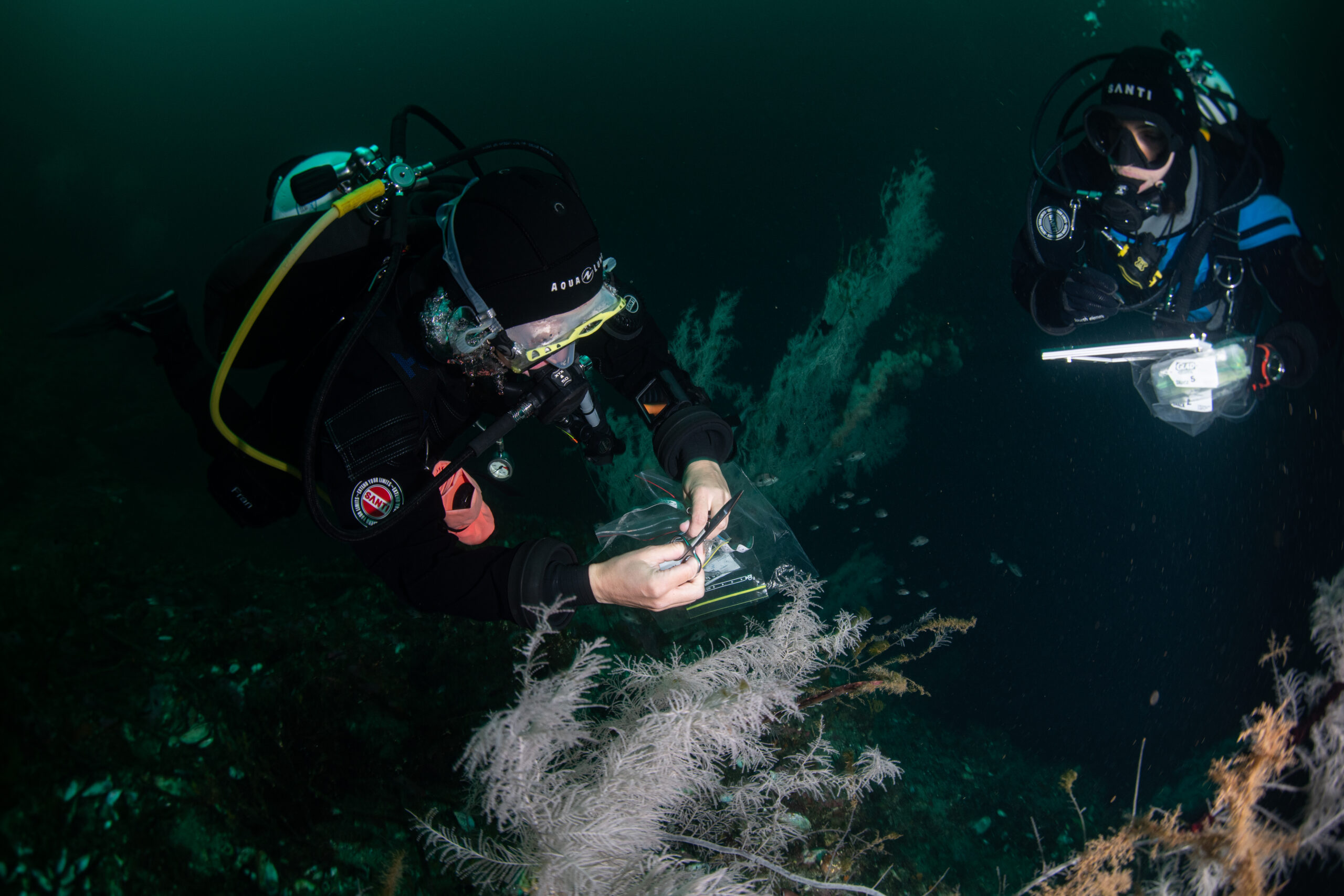
Studying the Fiordland black coral, Antipathella fiordensis. Photo by Crispin and Irene Middleton | © copyright
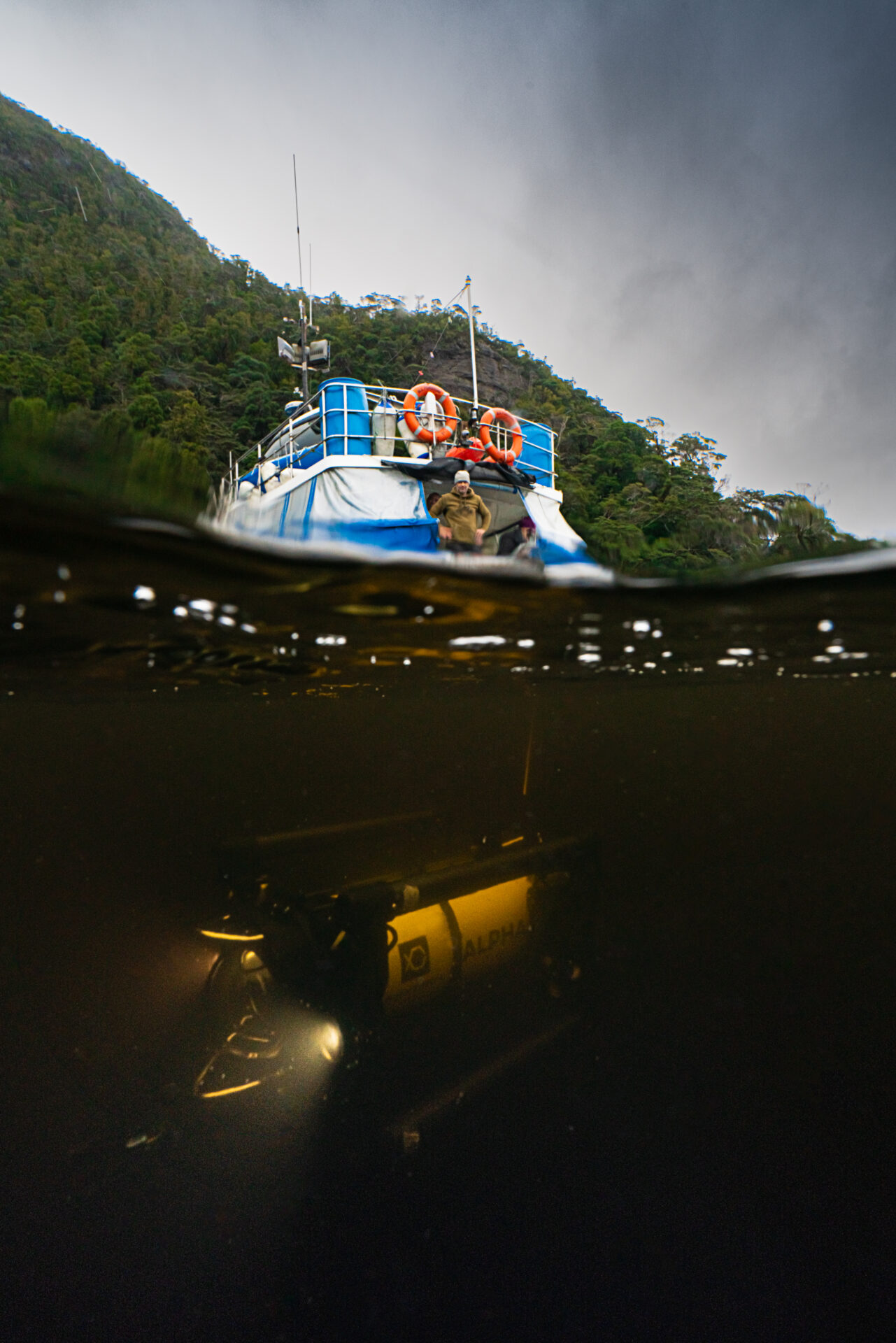
Professor James Bell deploying our Boxfish ROV for deep-water monitoring. Picture by Matteo Collina | © copyright
For sevengill shark research, our primary objective was to identify and confirm shark hot-spot locations for capturing and tagging sharks on our next trip. Paul and Katherine Mitchell, owner operators of the MV Pembroke and co-founders of the Southern Fiordland Initiative, were the source of invaluable local knowledge. With their advice we targeted a number of locations where shark sightings were common. At each site we deployed our Baited Underwater Video camera to see whether we could observe and identify sevengill sharks. We were not disappointed! At almost all of the locations we expected to see sharks, they arrived. We observed a range of sizes both male and female each providing us with some great video footage, checking out our camera, attacking our bait and generally giving us much confidence in our ability to find and tag plenty of sharks. In addition to sevengill sharks, we saw large numbers of spiny dogfish and school sharks, as well as rays, carpet sharks and the elusive deep-sea grouper, known locally as the Hapuka.
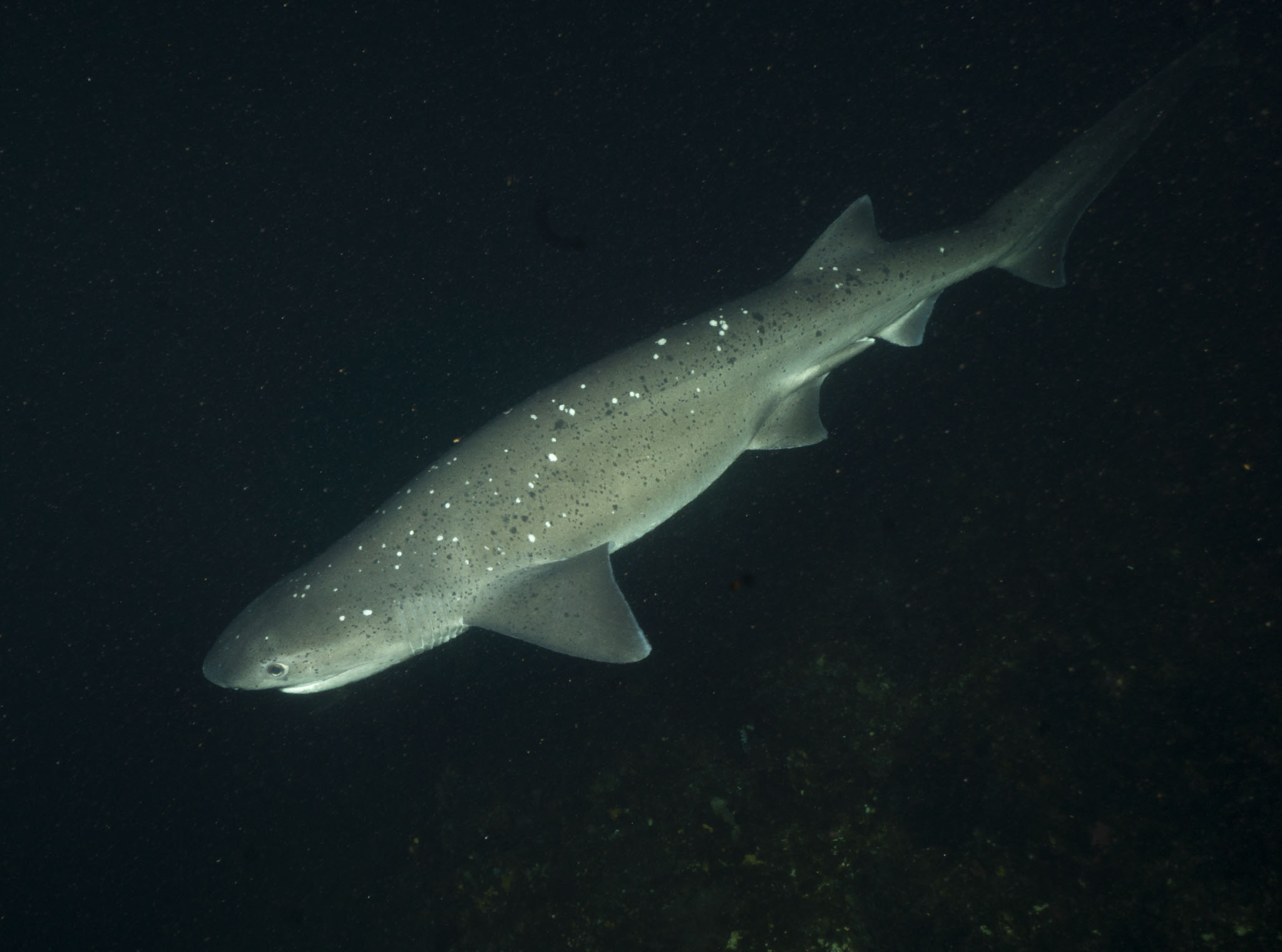
The broadnose sevengill shark, Notorynchus cepedianus. Photo by Richard Kinsey | © copyright
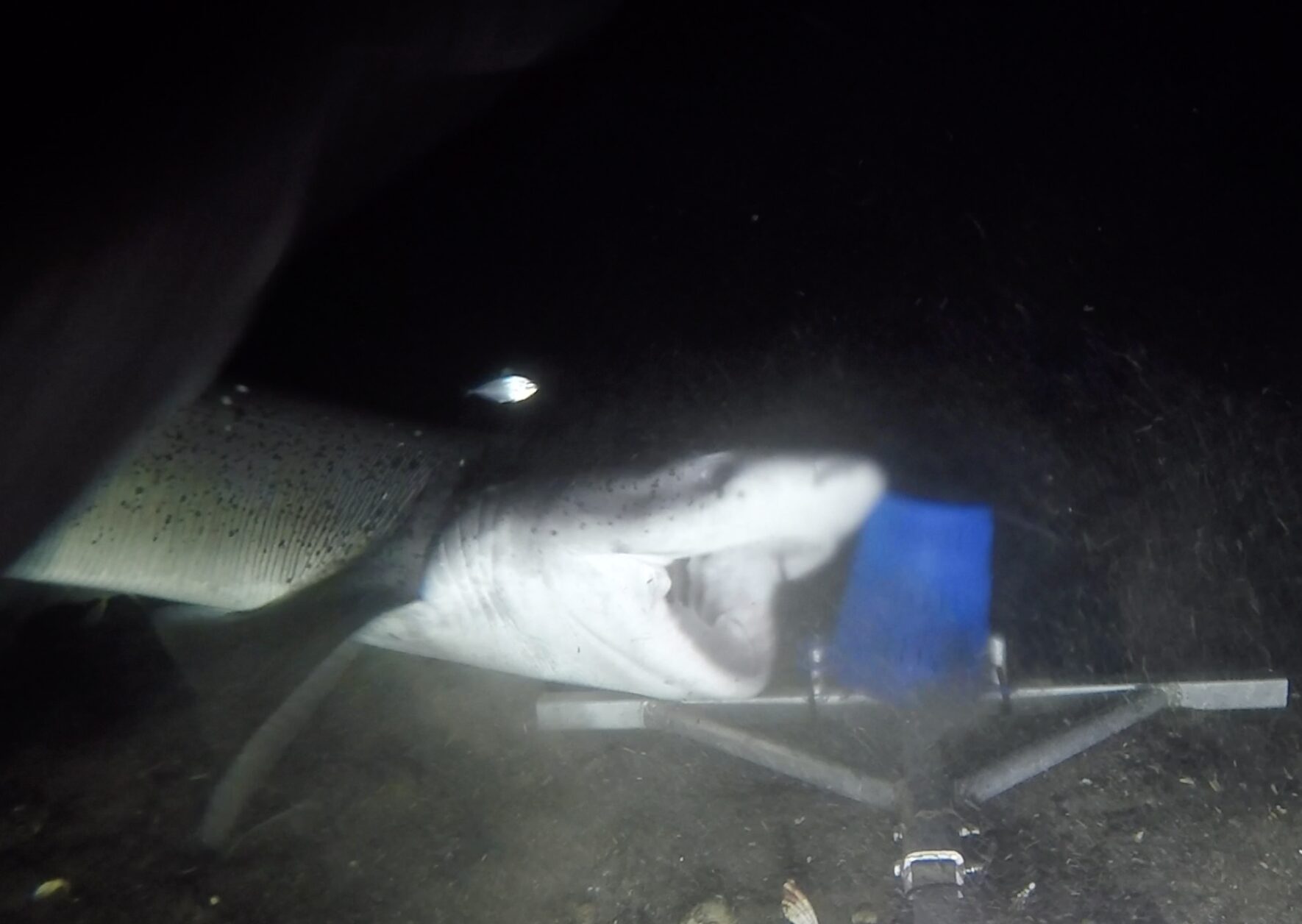
Sevengill attacking bait. Photo by Alice Rogers | © copyright

Sevengill checks out baited camera. Photo by Alice Rogers | © copyright
We cannot wait to return to Southern Fiordland in May 2024 when we will deploy an array of 30 acoustic receivers and hope to tag 20 sevengill sharks to start building up a picture of habitat use and seasonal movements.
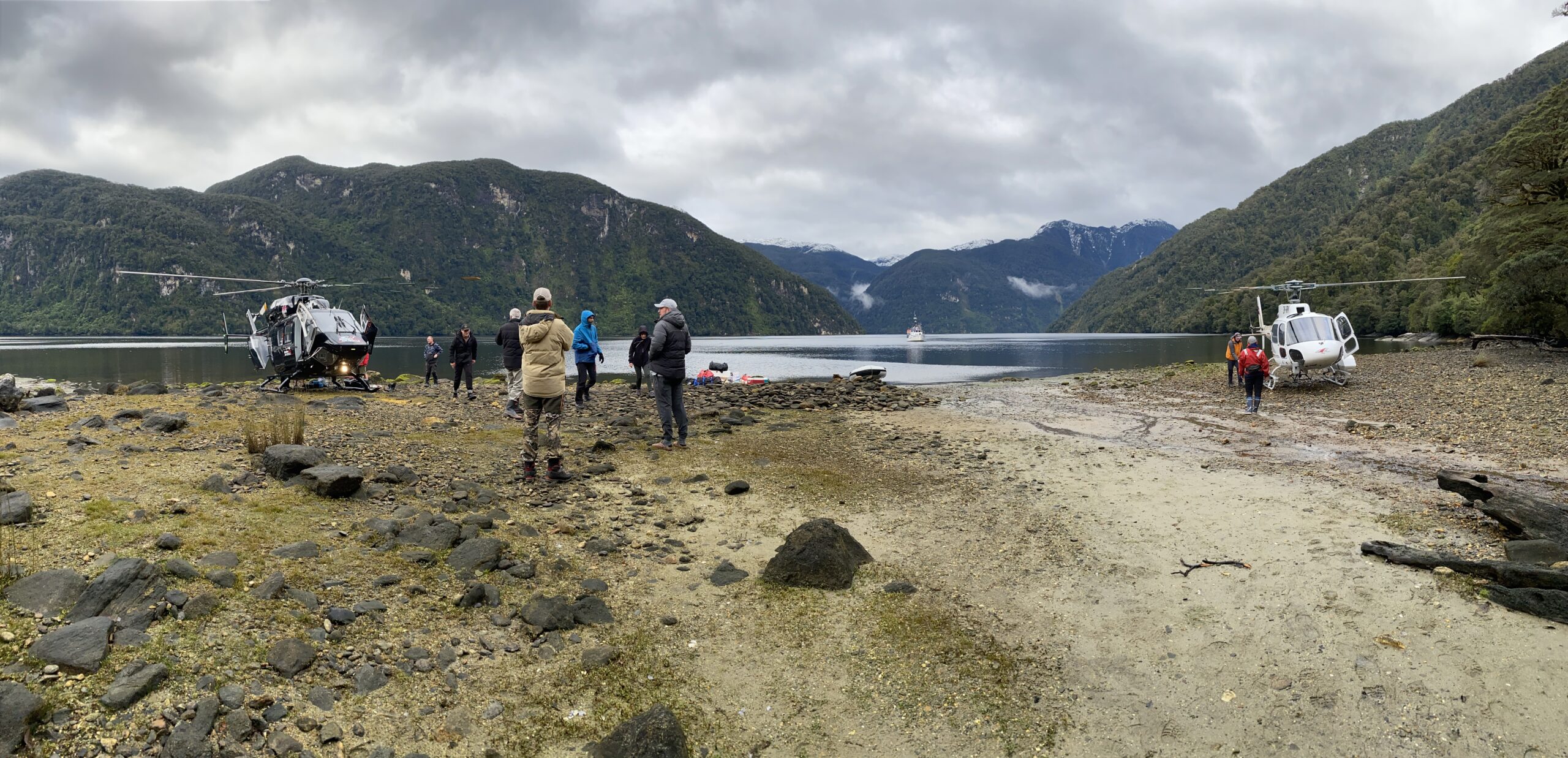
Preparing to leave Tamatea, Dusky Sound. Photo credit Alice Rogers | © copyright
